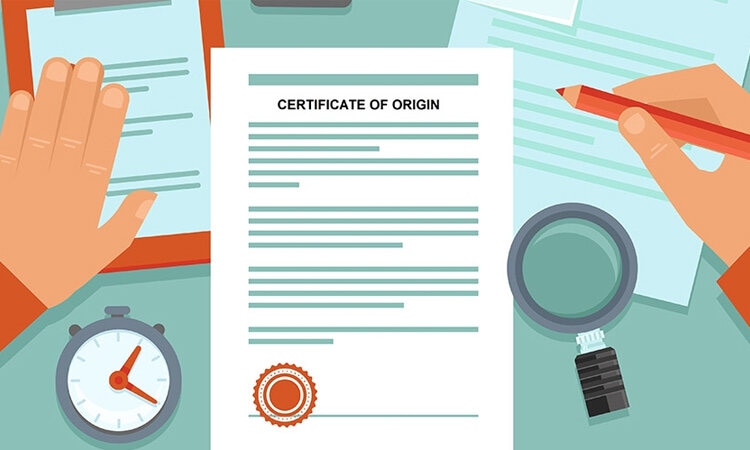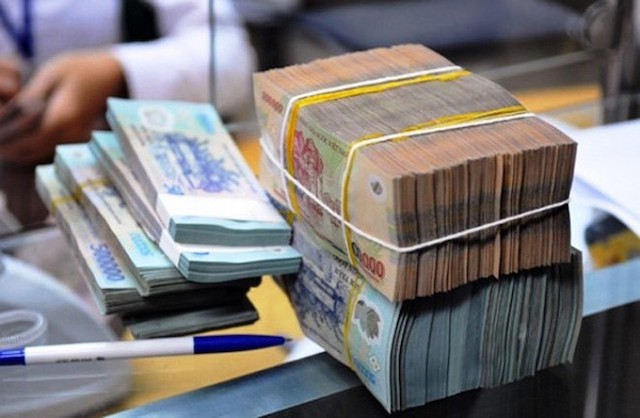What are the general principles when preparing and presenting consolidated financial statements in Vietnam? - Thanh Tuyen (Tien Giang, Vietnam)

General principles when preparing and presenting consolidated financial statements in Vietnam (Internet image)
Regarding this issue, LawNet would like to answer as follows:
1. Consolidated financial statement requirements in Vietnam
According to Article 3 of Circular 202/2014/TT-BTC, the requirements for consolidated financial statements are as follows:
- Summarize and present in a general and comprehensive manner the position of assets, liabilities, owner's equity at the end of the accounting period, business results, and cash flows during the accounting period of the group as an independent enterprise without regard to the legal boundaries of separate legal entities that are the parent company or its subsidiaries.
- Provide economic and financial information for the assessment of the financial position, business results and cash-generating ability of the Group in the past accounting period and forecast in the future; as a basis for decision-making about the management, operation, or investment of a business or business venture by a group of current and future owners, investors, creditors, and other users of the Financial Statements.
2. General principles when preparing and presenting consolidated financial statements in Vietnam
General principles when preparing and presenting the consolidated financial statements in Vietnam according to Article 10 of Circular 202/2014/TT-BTC are as follows:
* The parent company, when preparing the consolidated financial statements, must consolidate its own financial statements and those of all domestic and foreign subsidiaries controlled directly or indirectly by the parent company, except in the following cases:
- Control of the parent company is temporary because the subsidiary can only be acquired and held for resale purposes for a period not exceeding 12 months.
+ Temporary control must be determined at the time of acquisition of the subsidiary; and interim controlling investments are not presented as investments in subsidiaries but are classified as short-term investments held for trading purposes.
+ If at the time of purchase, the parent company classified the investment as a subsidiary, then the parent company plans to divest in less than 12 months; or a subsidiary is expected to go bankrupt, dissolve, split, merge, or terminate its operation in less than 12 months, the control right is not considered temporary.
- The subsidiary's activities are restricted for more than 12 months, and this significantly affects the ability to transfer capital to the parent company.
* Parent companies are not excluded from the Consolidated Financial Statements for:
- Subsidiaries have business activities different from those of the parent company and other subsidiaries in the group;
- Subsidiaries are Trust Funds, Mutual Funds, Venture Capital Funds or similar businesses.
* Consolidated financial statements are prepared and presented in accordance with the same accounting principles as the financial statements of independent enterprises in accordance with the provisions of Vietnamese Accounting Standard "Presentation of Financial Statements" and other relevant accounting standards.
* The consolidated financial statements have been prepared on the basis of applying the uniform accounting policy for transactions and events of the same type in similar circumstances throughout the Group.
- In cases where a subsidiary uses accounting policies that are different from those applied consistently in the group, the financial statements used for consolidation must be adjusted in accordance with the general policies of the group. The parent company is responsible for guiding the subsidiary to make adjustments to the financial statements based on the nature of the transactions and events.
Example: Using a uniform accounting policy:
+ The overseas subsidiary applies the revaluation model for fixed assets, and the parent company in Vietnam applies the historical cost model. Before consolidating the Financial Statements, the Group must convert the subsidiary's financial statements to the historical cost model;
+ The parent company in Vietnam applies the interest capitalization method to the construction of unfinished assets, and the overseas subsidiary records the interest expense on the unfinished assets as an expense in the period. Before consolidating the financial statements, the group must convert the financial statements of the subsidiary using the interest capitalization method on unfinished assets.
- Where a subsidiary cannot use the same accounting policy as the general policy of the group, the notes to the Consolidated Financial Statements must clearly disclose the items recognized and presented under different accounting policies, and those other accounting policies must be disclosed.
* The parent company's separate financial statements and the subsidiary's financial statements used for consolidation must be prepared for the same accounting period.
If the balance sheet date is different, the subsidiary is required to prepare an additional set of financial statements for the purpose of consolidation with the same accounting period as the parent company.
If this is not practicable, then the Financial Statements prepared at different times may be used, provided that the time difference does not exceed 3 months.
In this case, the financial statements used for consolidation must be adjusted for the effects of significant transactions and events that occurred between the subsidiary's balance sheet date and the group's balance sheet date. The length of the reporting period and the difference in the timing of the preparation of the financial statements must be consistent across periods.
* Business results of subsidiaries must be included in the Consolidated Financial Statements from the date on which the parent company acquires control of the subsidiary and terminate on the date on which the parent company effectively ceases to control the subsidiary.
Investments in an enterprise must be accounted for in accordance with Accounting Standard "Financial Instruments" since such enterprise is no longer a subsidiary and does not become a joint venture or associate.
* Ownership by the parent company and non-controlling shareholders of the subsidiary's identifiable net assets at the acquisition date must be stated at fair value, specifically:
- The net assets of the subsidiary at the acquisition date are recognized in the consolidated balance sheet at fair value. If the parent company does not own 100% of the subsidiary, the difference between the carrying amount and the fair value must be distributed to both parent and non-controlling shareholders.
- After the acquisition date, if the assets of the subsidiary (with a fair value different from the carrying amount) are depreciated, liquidated, or sold, the difference between the fair value and the carrying amount is considered realized and must be adjusted to:
+ Undistributed after-tax profit corresponding to the share owned by the parent shareholder;
+ Non-controlling shareholder interests correspond to the shares owned by non-controlling shareholders.
* If there is a difference between the fair value and the carrying amount of the subsidiary's net assets at the acquisition date, the parent company must recognize deferred income tax arising from the business combination.
* Goodwill or gain from a purchase is measured as the difference between the cost of an investment and the fair value of the subsidiary's net identifiable assets at the acquisition date held by the parent company (the time when the parent company holds control of the subsidiary).
- The time for allocating goodwill shall not exceed 10 years, starting from the date the parent company controls the subsidiary. According to the principle: the allocation must be made gradually over the years.
Periodically, the parent company must assess the loss of goodwill at the subsidiary, if there is evidence that the loss of goodwill is greater than the annual allocation, the allocation shall be based on the loss of goodwill in the period in which it arises. Some evidence of loss of goodwill includes:
+ After the date of controlling the subsidiary, if the cost of the additional investment is less than the parent company's share in the carrying amount of the net assets of the additional subsidiary acquired;
+ The market value of the subsidiary is reduced (for example, the market value of the subsidiary's shares is significantly reduced due to the subsidiary's continuous loss of business);
+ The credit rating has been reduced for a long time; If subsidiaries fall into insolvency, suspend operations, or are in danger of dissolution, bankruptcy, or termination of operations,
+ The financial indicators have been seriously and systematically reduced...
Example: Suppose that goodwill arising from 10 billion dong is amortized over 10 years (1 billion dong each year). After allocating goodwill for 3 years (VND 3 billion), if there is evidence that goodwill has been completely lost, in the 4th year, the amount of goodwill allocated is VND 7 billion.
- In a multi-stage business combination, when determining goodwill or profit from a cheap purchase (negative goodwill), the cost of the investment in a subsidiary is calculated as follows:
The sum of the cost of the investment at the date of acquisition of the subsidiary plus the cost of the investment in previous exchanges, revalued at fair value at the date the parent company controls the subsidiary.
* If, after taking control of a subsidiary, if the parent company continues to invest in the subsidiary to increase its holding interest rate, the difference between the cost of the additional investment and the carrying amount of the net assets of the acquired subsidiary should be recognized directly in undistributed profit after tax and treated as equity transactions.
(not recognized as goodwill or gain from bargain purchase).
In this case, the parent company does not recognize the net assets of the subsidiary at fair value as at the time of controlling the subsidiary.
* The items in the Consolidated Balance Sheet and Consolidated Income Statement are prepared by adding each item in the Balance Sheet and Income Statement of the Parent Company and its subsidiaries, then making adjustments for the following:
- The carrying amount of the parent company's investment in each subsidiary and the parent company's share of the subsidiary's equity must be eliminated in full at the same time, and goodwill or profit from a cheap purchase (if any);
- Allocation of goodwill;
- Non-controlling shareholder interests are presented in the consolidated balance sheet as a separate entry under equity. The ownership portion of non-controlling shareholders in the group's income statement must also be presented as a separate entry in the consolidated income statement;
- The balance of accounts receivable, payable, loaned, etc. between units in the same group must be eliminated completely;
- Revenues, incomes, and expenses arising from intra-group transactions must be completely eliminated;
- Unrealized profits arising from intra-group transactions that are included in the value of assets (such as inventories, fixed assets, etc.) must be completely eliminated.
Unrealized losses arising from internal transactions are reflected in the value of assets (inventory, fixed assets, etc.).
must also be eliminated unless the cost that caused the loss cannot be recovered.
* The difference between the proceeds from the divestment at the subsidiary and the value of the net assets of the divested subsidiary plus (+) the value of the unallocated goodwill portion shall be recorded immediately in the arising period according to the following principles:
- If the divestment transaction does not cause the parent company to lose control over the subsidiary, the entire above-mentioned difference is recorded in the entry "Undistributed profit after tax" on the Consolidated Balance Sheet. .
- If the divestment transaction results in the parent company losing control of the subsidiary, all the above differences are recognized in the consolidated income statement.
An investment in a subsidiary is accounted for as a normal financial investment or accounted for using the equity method since the parent company no longer retains control of the subsidiary.
* After making all the adjustment entries, the difference arising from the adjustment of items in the income statement must be transferred to undistributed profit after tax.
* The consolidated statement of cash flows is prepared based on the Consolidated Balance Sheet; Consolidated income statement, cash flow statement of the parent company and subsidiaries on the following principles:
The consolidated statement of cash flows presents only cash flows between the group and entities outside the group; including cash flows arising from transactions with the group's joint ventures, associates, and non-controlling shareholders, and is presented in the consolidated statement of cash flows under 3 types of activities:
Business activities, investment activities, and financial activities. All cash flows arising from transactions between the parent company and its subsidiaries within the group must be completely eliminated in the Consolidated Statement of Cash Flows.
* In case the parent company has subsidiaries that prepare financial statements in a different currency than the parent company's reporting currency, before consolidating the financial statements, the parent company must convert all the financial statements of the subsidiaries into the reporting currency of the parent company in accordance with the provisions of Chapter VI of Circular 202/2014/TT-BTC.
* Notes to the consolidated financial statements are prepared to further explain financial and non-financial information, based on the Consolidated Balance Sheet, Consolidated Income Statement; Consolidated statement of cash flows and related documents during the consolidation of Financial statements.
Quoc Dat
 Article table of contents
Article table of contents





.Medium.png)
.Medium.png)
.Medium.png)
.Medium.png)
